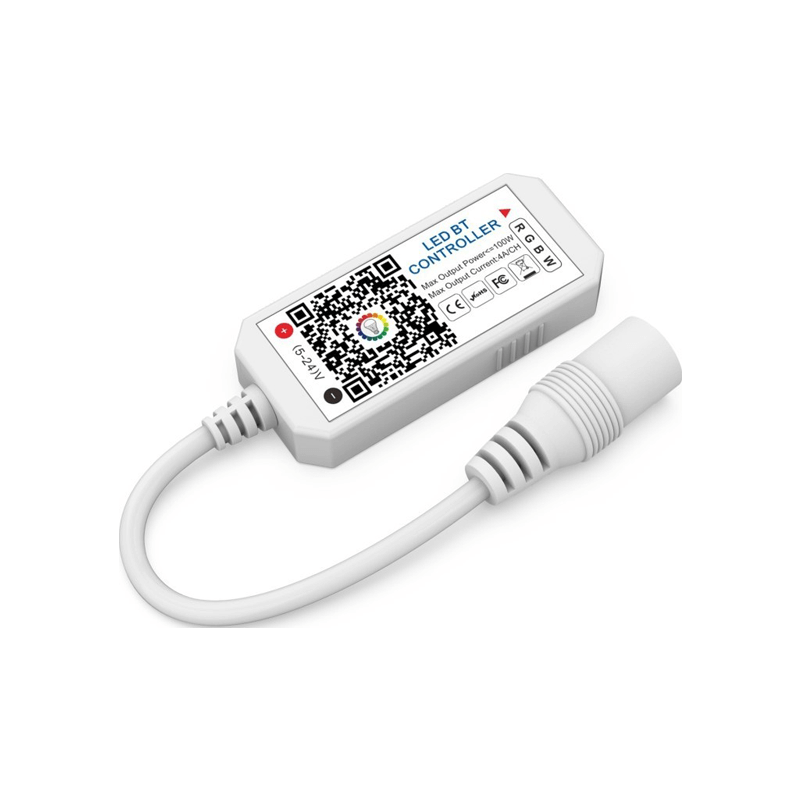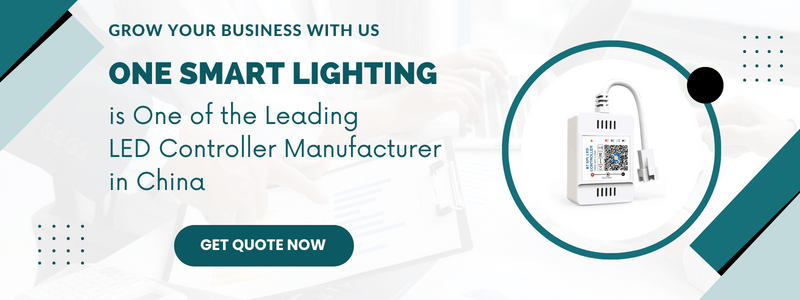Automotive lighting systems have become an integral part of modern vehicles, providing necessary illumination for driving and serving as a means of customization and personalization for vehicle owners. Recently, Bluetooth LED controllers have emerged as a popular choice for controlling automotive lighting, offering a range of advantages over traditional wired controllers. This article will explore the application and advantages of Bluetooth LED controllers in automotive lighting
Bluetooth LED controllers can be incorporated into automotive lighting systems in many ways, depending on the specific application and design of the vehicle.
One common approach is integrating the Bluetooth LED controller into the vehicle’s lighting system. It involves replacing the traditional wired controller with a Bluetooth-enabled controller that can communicate wirelessly with a mobile device or another Bluetooth-enabled device.
Another approach is to design a standalone lighting system that the Bluetooth LED controller powers. It can be particularly useful for aftermarket customization or retrofitting of existing vehicles. The standalone system can be designed to include a range of lighting features, including interior and exterior lighting, under-glow lighting, and dynamic lighting effects.
Regardless of the specific application, ensuring the Bluetooth LED controller is installed and configured correctly is important to ensure optimal performance and reliability. It may involve working with a professional installer or technician with experience with automotive lighting systems and Bluetooth technology. It is also important to choose a high-quality Bluetooth LED controller specifically designed for automotive applications to ensure compatibility and reliability in the challenging and demanding automotive environment.

Application of Bluetooth LED Controllers in Automotive Lighting
Bluetooth LED controllers offer a convenient and flexible way to control the lighting system in a vehicle. They can be used to control a wide range of lighting features, including interior lighting, exterior lighting, and underflow lighting. One of the key advantages of Bluetooth LED controllers is their wireless connectivity, which eliminates the need for complex wiring and allows for easy installation and configuration. Bluetooth LED controllers can be controlled via a mobile app on a smartphone or tablet, providing a user-friendly interface for adjusting lighting settings.
Bluetooth LED controllers can also be used to create dynamic lighting effects, such as color-changing sequences or pulsing patterns, which can add a unique visual element to a vehicle. In addition, Bluetooth LED controllers can be synchronized with music or sound, allowing for a fully immersive lighting experience.
Advantages of Bluetooth LED Controllers in Automotive Lighting
Wireless Connectivity: Bluetooth LED controllers offer a convenient and flexible way to control automotive lighting without complex wiring. It allows for easy installation and configuration and greater freedom in the placement of lighting fixtures.
User-Friendly Interface: Bluetooth LED controllers can be controlled via a mobile app, providing a user-friendly interface for adjusting lighting settings. It allows for greater customization and personalization of the lighting system.
Dynamic Lighting Effects: Bluetooth LED controllers can create dynamic lighting effects, such as color-changing sequences or pulsing patterns, adding a unique visual element to a vehicle.
Music Sync: Bluetooth LED controllers can be synchronized with music or sound, allowing for a fully immersive lighting experience. It can be particularly useful for car audio enthusiasts, as the lighting can be synchronized with the beat of the music.
Energy Efficient: Bluetooth LED controllers are energy efficient, consuming less power than traditional wired controllers. It can help reduce a vehicle’s overall energy consumption and improve fuel efficiency.
Why Bluetooth LED Controllers are Ideal for Automotive Applications: A Technical Analysis
Bluetooth LED controllers have become increasingly popular for use in automotive lighting applications. In this article, we will explore the technical reasons why Bluetooth LED controllers are well-suited for vehicle use.
Wireless Connectivity
One of the key advantages of Bluetooth LED controllers is their wireless connectivity. It eliminates the need for complex wiring, making installation and configuration of the lighting system much simpler. In addition, Bluetooth technology provides a reliable and secure wireless connection, critical in automotive applications where safety is paramount.
Bluetooth Low Energy (BLE)
Bluetooth LED controllers typically use Bluetooth Low Energy (BLE) technology, a version of Bluetooth specifically designed for low-power applications. It makes Bluetooth LED controllers more energy efficient than traditional wired controllers, which is particularly important in automotive applications where energy efficiency is a priority.
Compatibility with Mobile Devices
Bluetooth LED controllers for automotive can be controlled via a mobile app on a smartphone or tablet. This provides a user-friendly interface for adjusting lighting settings and allows for greater customization and personalization of the lighting system. In addition, mobile devices can be used to synchronize the lighting with music or sound, providing a fully immersive lighting experience.
Compatibility with LEDs
Bluetooth LED controllers are designed to work specifically with LED lighting systems. LEDs are the preferred lighting technology for automotive applications due to their energy efficiency, reliability, and long lifespan. Bluetooth LED controllers are optimized to work with the unique characteristics of LED lighting, ensuring optimal performance and efficiency.
Flexibility in Lighting Control
Bluetooth LED controllers offer a high degree of flexibility in lighting control. They can be used to control a wide range of lighting features, including interior lighting, exterior lighting, and underflow lighting. In addition, Bluetooth LED controllers can be used to create dynamic lighting effects, such as color-changing sequences or pulsing patterns, which can add a unique visual element to a vehicle.
Conclusion
Bluetooth LED controllers are well-suited for automotive applications due to their wireless connectivity, energy efficiency, compatibility with mobile devices and LED lighting, and flexibility in lighting control. With the increasing popularity of customization and personalization in the automotive industry, Bluetooth LED controllers will likely become even more prevalent. By leveraging the unique technical advantages of Bluetooth LED controllers, vehicle owners can enhance their vehicles’ visual appeal and functionality while also improving energy efficiency and safety.
With the increasing popularity of customization and personalization in the automotive industry, Bluetooth LED controllers will likely become even more prevalent.

